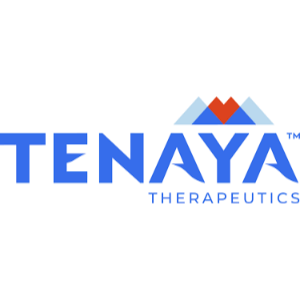Tenaya Therapeutics to Highlight Capsid Engineering, Gene Editing and Manufacturing Research at the ASGCT 28th Annual Meeting
Rhea-AI Summary
Positive
- None.
Negative
- None.
News Market Reaction 1 Alert
On the day this news was published, TNYA declined 4.06%, reflecting a moderate negative market reaction.
Data tracked by StockTitan Argus on the day of publication.
Advancements Lay the Groundwork for Future Genetic Medicines for Rare and Prevalent Forms of Heart Disease
SOUTH SAN FRANCISCO, Calif., May 13, 2025 (GLOBE NEWSWIRE) -- Tenaya Therapeutics, Inc. (NASDAQ: TNYA), a clinical-stage biotechnology company with a mission to discover, develop and deliver potentially curative therapies that address the underlying causes of heart disease, today announced that it will present five abstracts at the upcoming American Society of Gene and Cell Therapy (ASGCT 2025) 28th Annual Meeting taking place May 13-17, 2025 in New Orleans, LA.
The abstracts being presented at ASGCT 2025 capture the outcome of efforts to advance Tenaya’s core capabilities in novel capsid engineering, identification, design and optimization of cardiomyocyte-targeting genetic medicines, and manufacturing of adeno-associated virus (AAV) gene therapies.
Abstract highlights
- Refining capsid engineering capabilities with high-throughput in vivo and in silico screening: Building on previous research that showed the superior cardiomyocyte-targeting and robust transduction attributes of AAV serotype 9 (AAV9) compared to other naturally occurring capsids, Tenaya’s researchers combined high throughput in vivo experimental screening with multiple in silico screening tools to efficiently identify various novel capsid candidates. Novel capsids were then compared to one another and to AAV9 in murine and non-human primate models. Select top performing capsids were further evaluated and found to outperform AAV9 in terms of cardiomyocyte targeting and efficient in vivo cardiac gene therapy.
- Prime editing aimed at cardiomyocytes and development of a humanized RBM20-related dilated cardiomyopathy (DCM) model: Tenaya researchers will share efforts to develop prime editing, a precision gene editing technique, aimed at cardiomyocytes. The machinery required for prime editing exceed the capacity of a single AAV capsid, so Tenaya researchers created a prototype utilizing one of the company’s engineered AAV capsids, a dual cassette arrangement delivered via two AAV capsids, and cardiomyocyte-specific regulatory elements.
The therapeutic potential of this prime editing prototype was studied in an RBM20 murine model of DCM. The prime editing prototype successfully achieved correction of the mutated RBM20 allele, improving cardiac function and reversing disease in the mouse model. A humanized mouse model of RBM20-mutant DCM was also developed and validated by Tenaya researchers. Testing of the prototype in this model demonstrated effective cardiac editing of the humanized allele using the in vivo dual vector prime editing approach.
- TN-501 Cas9 gene editing candidate for the potential treatment of PLN-R14del-associated DCM: Tenaya previously presented research on the development of a Cas9 gene editing therapy, TN-501, designed to specifically inactivate the mutant phospholamban (PLN)-R14del allele, and thereby eliminate the "poison peptide" effects of the mutant protein while preserving wild-type function. Preclinical studies in murine models demonstrated that a low dose of a murine surrogate of TN-501 effectively prevented mutant PLN protein aggregation, reduced cardiac fibrosis, improved cardiac function, and significantly enhanced survival to wild-type levels. Doses tested were well tolerated and anti-Cas9 antibody responses and Cas9 T-cell activation were low.
- Improving manufacturing yields for AAV-based genetic medicines across platforms: Tenaya successfully established Sf9/rBV-based manufacturing processes at the 1000L scale for its clinical-stage AAV gene therapy programs and subsequently also established a proprietary HEK293-based manufacturing process. Tenaya’s HEK393 process utilizes a single plasmid expression system, as well novel transfection reagents, to improve overall yield while lowering overall costs compared to current commercially available options, which may support the development of more cost-effective AAV gene therapies.
Details of Tenaya’s ASGCT 2025 presentations are as follows:
Tuesday, May 13, 2025
Poster Abstract Session - 6:00 pm – 7:30 pm
- Abstract: #523
Title: A Humanized RBM20 Mouse Model Exhibits Dilated Cardiomyopathy Phenotypes and Enables Development of In Vivo Prime Editing for Treating Human RBM20 Cardiomyopathy Patients
Presenting author: Wenjing Liang, Ph.D., Scientist
- Abstract: #952
Title: High Productivity HEK293 AAV Production Platform Enabled by Novel Transfection Reagents and Proprietary Plasmid Expression Systems
Presenting author: Charles Feathers, Senior Manager, Process Development
Wednesday, May 14, 2025
Poster Abstract Session – 5:30 pm – 7:30 pm
- Abstract: #1022
Title: TN-501 Gene Editing Therapy for PLN-R14del-Associated Cardiomyopathy
Presenting author: Huanyu Zhou, Ph.D., Associate Director
- Abstract: #1028
Title: Developing In Vivo Prime Editing as a Potential Treatment Option for Heart Disease
Presenting author: Lindsey Rollosson, Research Associate II
- Abstract: #1396
Title: Engineering Novel AAV Capsids for Cardiac Gene Delivery
Presenting author: Ze Cheng, Ph.D., Principal Scientist
Following the conference, Tenaya’s presentations will be available in the “Our Science” section of the company’s website.
About Tenaya Therapeutics
Tenaya Therapeutics is a clinical-stage biotechnology company committed to a bold mission: to discover, develop and deliver potentially curative therapies that address the underlying drivers of heart disease. Tenaya employs a suite of integrated internal capabilities, including modality agnostic target validation, capsid engineering and manufacturing, to generate a portfolio of genetic medicines aimed at the treatment of both rare genetic disorders and more prevalent heart conditions. Tenaya’s pipeline includes TN-201, a gene therapy for MYBPC3-associated hypertrophic cardiomyopathy (HCM), TN-401, a gene therapy for PKP2-associated arrhythmogenic right ventricular cardiomyopathy (ARVC), TN-301, a small molecule HDAC6 inhibitor intended for heart failure with preserved ejection fraction (HFpEF), and multiple early-stage programs in preclinical development. For more information, visit www.tenayatherapeutics.com.
Forward-Looking Statements
This press release contains forward-looking statements as that term is defined in Section 27A of the Securities Act of 1933 and Section 21E of the Securities Exchange Act of 1934. Statements in this press release that are not purely historical are forward-looking statements. Words such as “will,” “potential,” “may,” and similar expressions are intended to identify forward-looking statements. Such forward-looking statements include, among other things, the presentation of data covering Tenaya’s capabilities in novel capsid engineering, identification, design and optimization of cardiomyocyte-targeting genetic medicines, and manufacturing of AAV gene therapies; the therapeutic potential of Tenaya’s prime editing technology in a humanized RBM20 murine model of DCM; TN-501 as a potential treatment for PLN R14del-associated DCM; the commercial potential of Tenaya’s manufacturing process to support the development of more cost-effective AAV gene therapies. The forward-looking statements contained herein are based upon Tenaya’s current expectations and involve assumptions that may never materialize or may prove to be incorrect. These forward-looking statements are neither promises nor guarantees and are subject to a variety of risks and uncertainties, including but not limited to: availability of data at the referenced times; risks associated with the process of discovering, developing and commercializing therapies that are safe and effective for use as human therapeutics; Tenaya’s ability to develop, initiate or complete preclinical studies and clinical trials, and obtain approvals, for any of its product candidates; Tenaya’s continuing compliance with applicable legal and regulatory requirements; Tenaya’s ability to raise any additional funding it will need to continue to pursue its business and product development plans; Tenaya’s reliance on third parties; Tenaya’s manufacturing, commercialization and marketing capabilities and strategy; the loss of key scientific or management personnel; competition in the industry in which Tenaya operates; Tenaya’s ability to obtain and maintain intellectual property protection for its product candidates; general economic and market conditions; and other risks. Information regarding the foregoing and additional risks may be found in the section entitled “Risk Factors” in documents that Tenaya files from time to time with the Securities and Exchange Commission. These forward-looking statements are made as of the date of this press release, and Tenaya assumes no obligation to update or revise any forward-looking statements, whether as a result of new information, future events or otherwise, except as required by law.
Contact
Michelle Corral
VP, Corporate Communications and Investor Relations
Tenaya Therapeutics
IR@TenayaThera.com
Investors
AnneMarie Fields
Stern IR
AnneMarie.Fields@SternIR.com
Media
Wendy Ryan
Ten Bridge Communications
wendy@tenbridgecommunications.com








